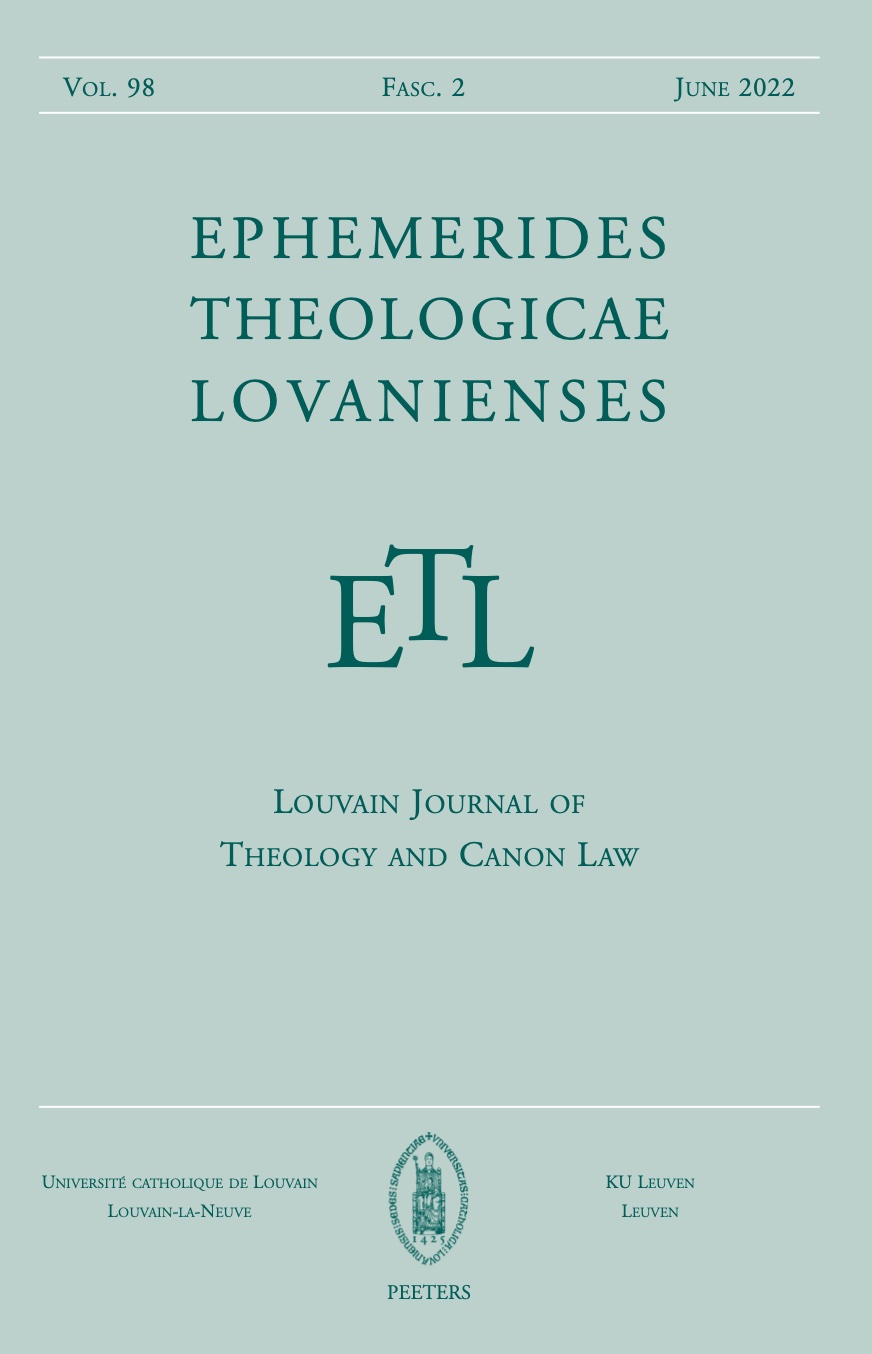 previous article in this issue previous article in this issue | next article in this issue  |

Preview first page |
Document Details : Title: Turning the Tables Subtitle: Jesus' Temple Cleansing and the Story of Lycaon Author(s): HUYS, Marc Journal: Ephemerides Theologicae Lovanienses Volume: 86 Issue: 1 Date: 2010 Pages: 137-161 DOI: 10.2143/ETL.86.1.2051613 Abstract : In the line of the work of H.D. Betz, J. Ådna and A.Y. Collins this article attempts to cast new light on the gospel sequence of Jesus’ temple cleansing (Matt 21,12-13, Mark 11,15-17, John 2,13-17) with the help of comparative Graeco-Roman literature and religion. The analysis focuses on the meaning of the table in pagan temple cults and on the symbolic and ritual dimension of the gesture of overturning a table, esp. in the famous mythical stories of cannibalism (Lycaon, Tantalus, Thyestes, Tereus). By retaining this violent detail, the evangelists underlined the pivotal role of the event for the Hellenised part of their audience, acquainted with the symbolic overtones of this motif in Graeco-Roman tradition: overthrowing the table of cultic perversion symbolises divine wrath towards sacrificial abuse and human degeneration as well as its subsequent substitution by a radically reformed sacrifice ritual and a totally new moral and religious order. In accordance, John may have preferred the verb ἀνατρέπω to the Synoptics’ καταστέφω, precisely because of its Graeco-Roman connotations, which fertilised the interpretation in the light of the Old Testament expectation of a saviour who would purify the temple cult. Thus the analogy enhanced John’s symbolic reading, which brings us near the interpretations of E.P. Sanders and J. Neusner. |
|


